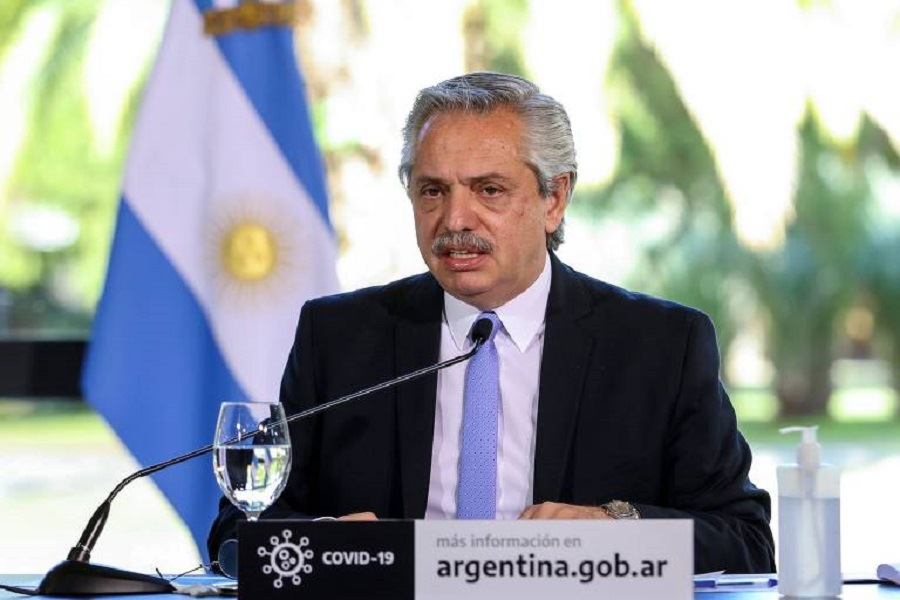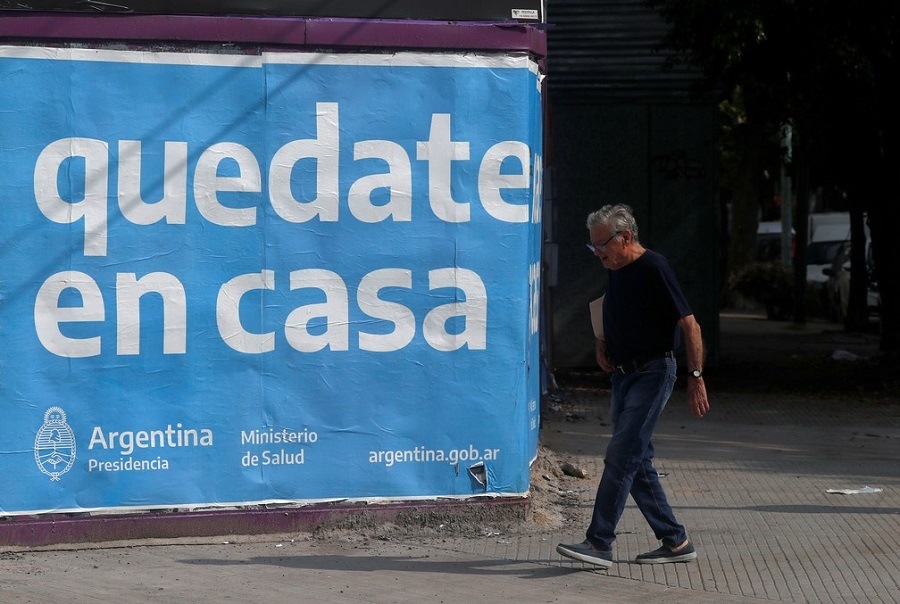RIO DE JANEIRO, BRAZIL – Buenos Aires returns to the strictest stage of quarantine. On Friday, President Alberto Fernández announced that he will fight the escalation of Covid-19 cases in the Argentine capital and its metropolitan area, where 93.5 percent of all new positives are concentrated.
After almost 100 days of confinement, the government has asked the population for “another effort” to “flatten the curve” of infections.

“As of Monday, transport will be limited to the use of 24 essential activities. On Wednesday we will take one more step: we will ask everyone to isolate themselves in their homes again and leave only to buy supplies for daily life. This will be the case until July 17th,” Fernández said in a recorded announcement.
The interior of the country is experiencing another scenario, where there are hardly any positive cases and restrictions on movement are minimal.
Argentina’s strategy against the disease is increasingly less national and more AMBA, as the city of Buenos Aires and the surrounding provincial districts are called. It is home to 16 million people, equivalent to 35 percent of the country’s population located in only one percent of the territory. The concentration of people has made pandemic control more difficult, despite the isolation measures.
While cases of coronavirus are not growing much elsewhere in Argentina, in the large urban conglomerate the curve has been climbing uninterruptedly for two weeks.
Of the 2,606 positive cases recorded on Thursday, 2,424 were detected in Buenos Aires. The authorities fear that unless quarantine is tightened, the health system in the area will collapse in three weeks, which today stands at 54 percent capacity. “The AMBA is infecting the rest of the country and it must be isolated,” Fernández said.
Argentina records 52,457 positives for coronavirus and 1,167 deaths. These are very low numbers compared to neighboring countries such as Brazil (almost 1.3 million infections and 55,000 deaths) and Chile (260,000 cases and 7,000 deaths). Authorities attribute pandemic control to the quarantine in place since March 20th, but now fear that relaxation will trigger cases in Buenos Aires.
“Over the past 20 days, cases have increased by 147 percent, and deaths by 95 percent. We knew this could happen and we were prepared to fight it,” Fernández said. The strategy’s success will hinge on the population’s compliance, which is tired after a hundred days of confinement and an economy in free fall.
For the first time since the quarantine began, the announcement of the extension was recorded, the fifth since March 20th. However, the scenario was the same as on other occasions: President Fernández was joined by the mayor of Buenos Aires, opposition politician Horacio Rodríguez Larreta, and the governor of the province of Buenos Aires, Situationist Axel Kicillof.
The pandemic has pushed political differences to the future, forcing Rodríguez Larreta and Kicillof, two leaders who are politically on opposite sides, to come to an understanding.
Poverty growth
The prolonged quarantine has deepened poverty and social inequality in Argentina, concedes Social Development Minister Daniel Arroyo. “The food emergency was affecting eight million people, today it’s eleven,” Arroyo explained. One in four Argentineans has insufficient income to buy food, which forced the government to increase social aid, which today represents three percent of Argentina’s GDP.

Although Buenos Aires and its metropolitan area are nearing the peak of the pandemic, the outlook for the end of the year is devastating, particularly for children. According to the United Nations, almost 60 percent of the country’s children and adolescents will live in poor homes.
Arroyo believes that to emerge from the current crisis, Argentina must face “structural changes” in its reconstruction. Among them is the urbanization of the approximately 4,000 slums in which over 4 million people live and which have become one of the most vulnerable points of the pandemic, due to housing and water supply problems.
The Fernández government also intends to set work plans in motion and wants to create a basic income, similar to that approved in Spain, to replace the current Emergency Family Income.
Source: El País

